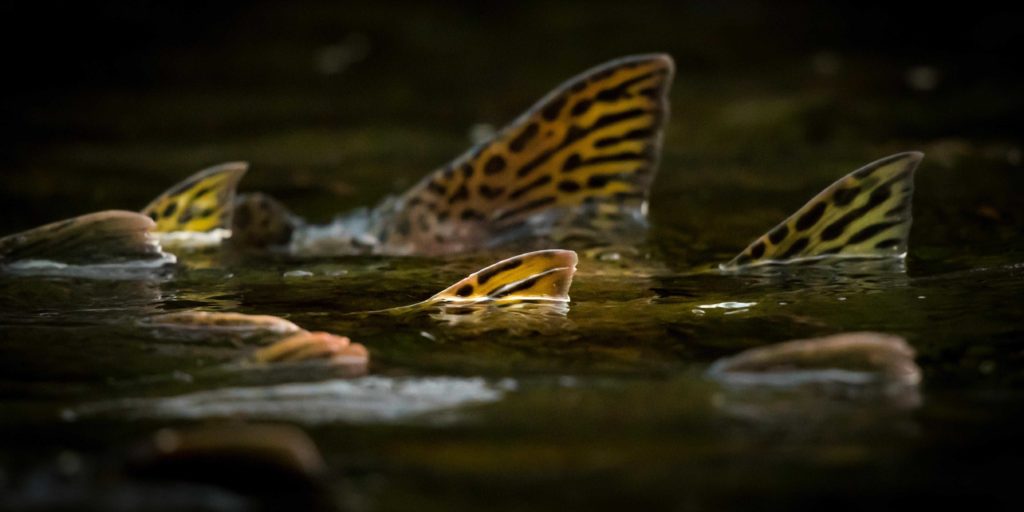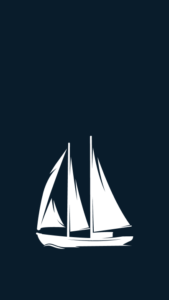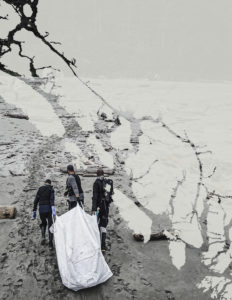
Pacific Salmon
Coastal British Columbia certainly doesn’t lack for iconic species. Bears and wolves. Killer whales and humpbacks. Sea otters and eagles. Take your pick. That said, there is one relatively diminutive creature that swims past them all — wild Pacific salmon
They aren’t particularly charismatic, but on cultural, economic and ecological scales, nothing compares to these silvery titans.
In BC, hundreds of species depend on salmon for their survival while recreational and commercial salmon fisheries play a major role in our economy.
In British Columbia, there are seven species of Pacific salmon: chinook, coho, pink, chum, sockeye, steelhead, and sea-run cutthroat. The life-cycles of these species vary. They all spend time in the ocean but when they return to spawn, some species, like chum, do it almost intertidally, whereas other species like chinook and coho can go as far as 1500 kilometres inland.
According to Scott Wallace, a senior research scientist with the David Suzuki Foundation and an Outer Shores Expedition Specialist, salmon have also had an enormous influence on where humans have chosen to live. “In coastal BC, pretty much anywhere there’s a salmon stream you’ll find a current settlement or archeological evidence of one,” he says.

The question of the most important salmon species depends on who, or what, you are. For those who enjoy salmon on their dinner plates, chinook, coho, and sockeye are tops. For those who like to fight with rod and reel for their food, chinook and coho are your trophies. But if you’re a bear or wolf in the Great Bear Rainforest, then pink and chum salmon, the most abundant salmon species, are what you need to survive.
Wallace says that the health of BC’s salmon populations is a bit of a mixed bag these days. “Some salmon runs are critically endangered while others are plentiful,” he says. He’s particularly concerned with the struggling state of the southern chinook population. This is bad news for the endangered southern resident killer whales who feed almost exclusively on chinook. “There’s strong evidence we’ve fished these chinook too hard,” says Wallace. “We aren’t letting enough of them go to their spawning grounds.”
The variables that can influence a salmon’s life cycle are practically endless. Salmon have hundreds of predators, thousands of competitors, and they come into contact with a multiplicity of habitats including rivers, lakes, estuaries, and the open ocean. Because of this, it’s often hard to understand why some runs are in trouble.
In fact, there are still many unanswered questions about Pacific salmon in general. Take the mystery of the Fraser River sockeye, the most studied and most valuable run in Canada. Every four years, without fail, there is a dominant run and we still don’t know why this happens.
Wallace says that in his opinion chum salmon are the most impressive species of all. “They spread out over the entire North Pacific ocean, practically to Japan and back, eating salps and jellyfish. Then they return and concentrate that huge feeding terrain into all these tiny coastal watersheds. And once they enter those watersheds they’re fuelling the whole food web. Everything eats them, from bears and wolves to insects and birds.”
BC’s coastal ecosystems have been dependent on salmon for thousands of years and with conservation-minded management, we can help ensure the health of that relationship.
Wallace says it might help to rethink the idea of salmon as a marine creature. “There’s a quote I like,” he says. “It’s from the Haida Nation’s Charlie Bellis: ‘Salmon are creatures of the forest. They’re born in the forest and it’s in the forest that they die.’




